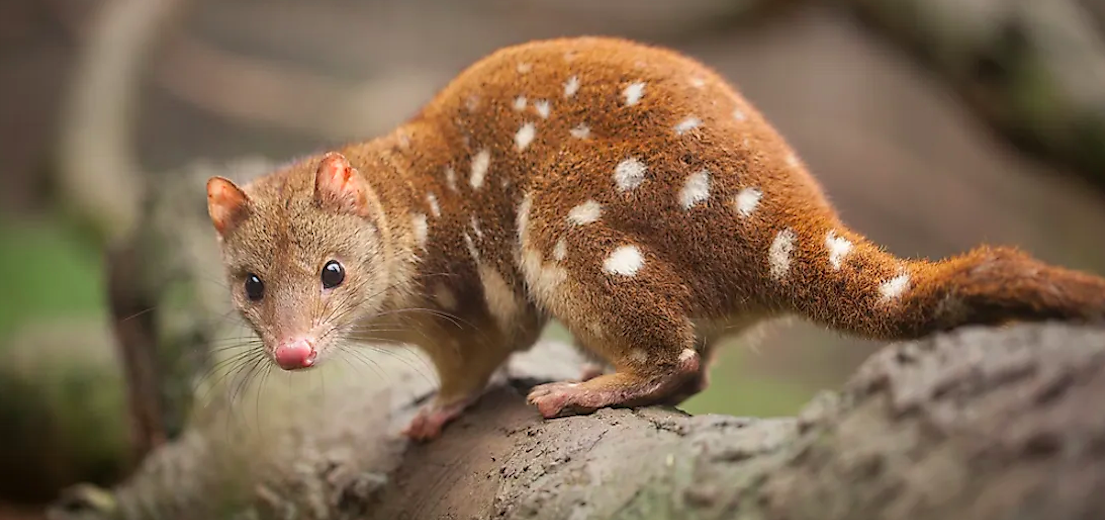
Quolls are omnivorous marsupials native to mainland Australia, New Guinea, and Tasmania. There are 6 known species of quoll and all are cute as well as fascinating. Quolls inhabit forests, scrublands, and grasslands at altitudes of up to 11,000 feet. Their numbers have dropped dramatically since the last century due to the introduction of invasive species like the cane toad, foxes, cats, and dogs. Quolls are listed as Near Threatened and Endangered by the IUCN.
First the Stats…
Scientific name: Dasyurus
Weight: Up to 7.2 pounds
Length: Up to 17 inches
Lifespan: Up to 5 years
Now on to the Facts!
1.) Most species of quolls are listed as threatened or endangered by the IUCN.
2.) They have sharp claws on their fore and hind paws that are used for catching and holding food, climbing, and digging burrows.
3.) These critters are nocturnal (active at night).
4.) Climbing trees (arboreal) comes easy to these creatures but they also spend time on the ground (terrestrial).
5.) Their diet is primarily based on small mammals (like rabbits), sugar gliders, small birds, snakes, amphibians, and insects. Even though they are primarily carnivorous (eats meat) they will occasionally eat fruit and nuts. Thus making them omnivores.
But wait, there’s more on quolls!
6.) Crocodiles, snakes, cats, dogs, and foxes are their main predators.
7.) Territorial and solitary, their territories do overlap. They will share a common spot to go to the bathroom. Males will often fight if they come into contact with each other.
Did you know…?
Predation by feral cats is a major threat to Northern Quolls. The impacts of cats are exacerbated by extensive fires and grazing, which reduce ground cover and hence shelter for small mammals.
8.) Pregnancy lasts only 2 weeks and ends with up to 30 babies! The babies weigh less than 0.03 ounces.
9.) Babies spend the first 8 weeks of their life inside their mother’s pouch. After that, they are mature enough to leave the pouch and ride on their mother’s back.
10.) The female’s pouch is not a ‘true’ pouch. It forms out of a fold of skin on her stomach after successful mating. The pouch only has 6 teats, which means that only 6 out of 30 babies will survive and reach adulthood.
Now a Short Quoll Video!
Also, check out the Critter Science YouTube channel. Videos added frequently!
Want to suggest a critter for me to write about? Let me know here.




Amazing!!!
This cute but fierce creature is one my favourite animals.